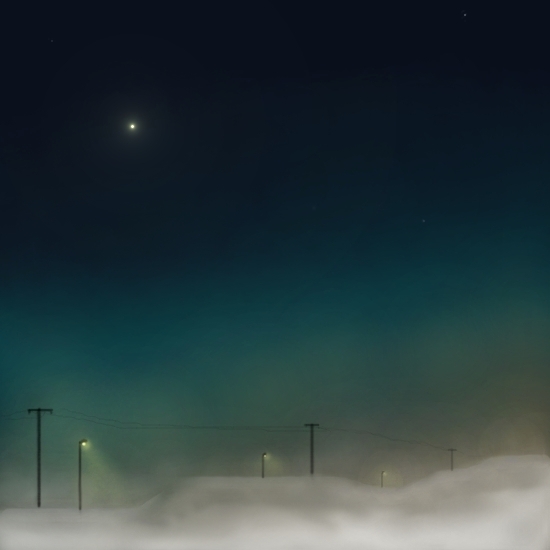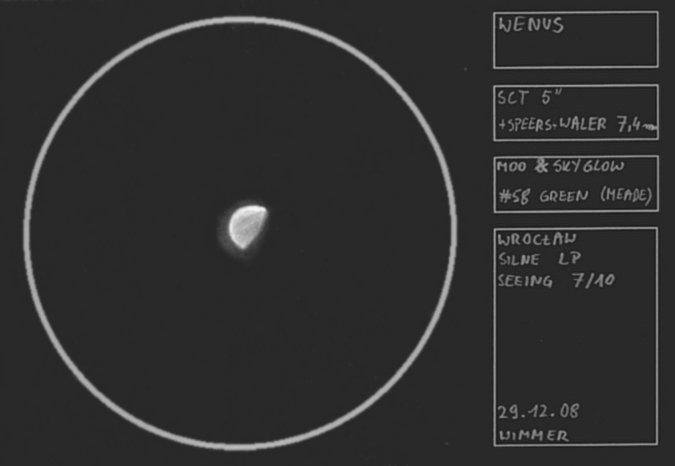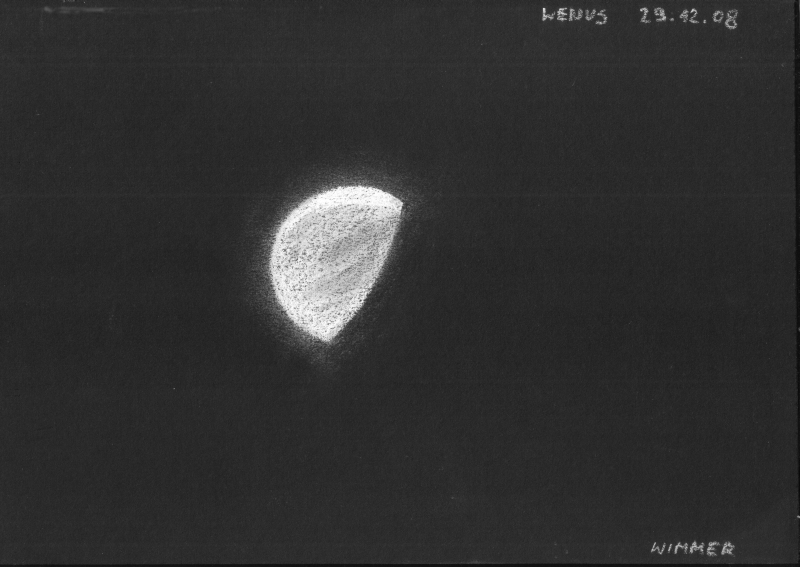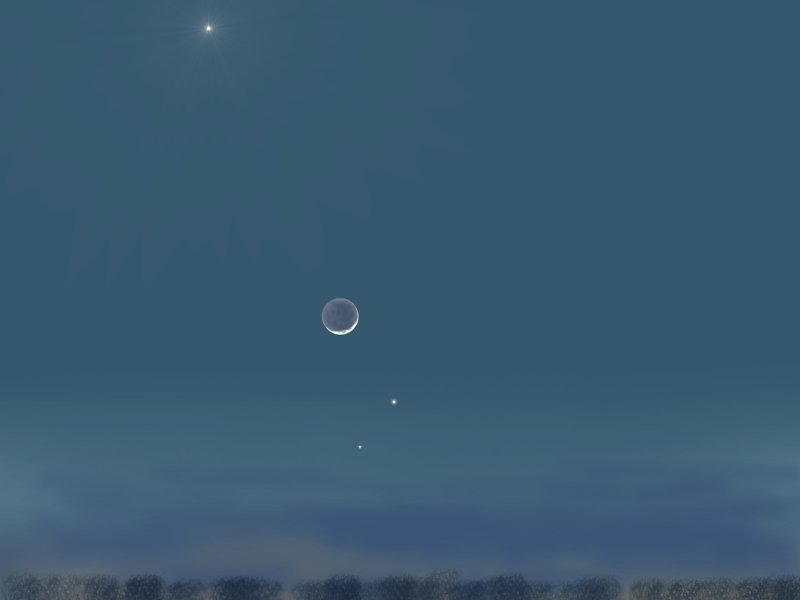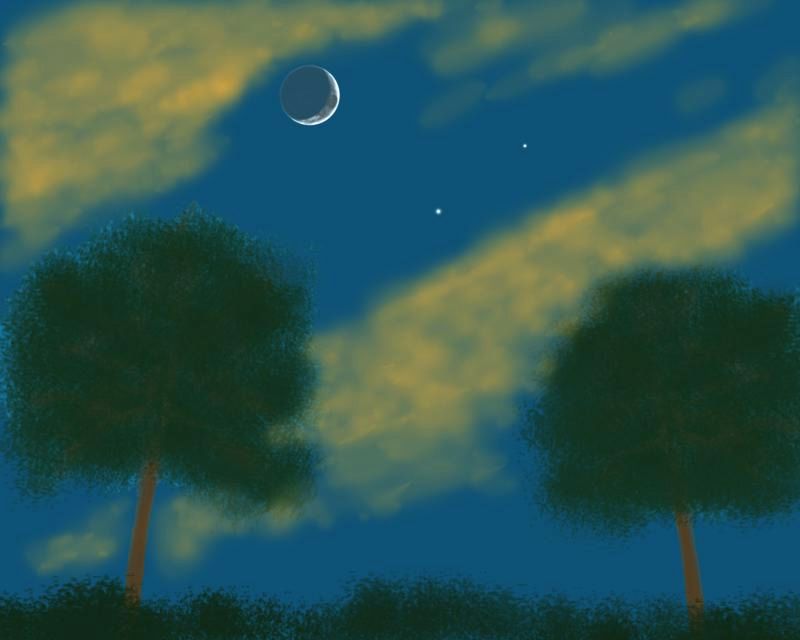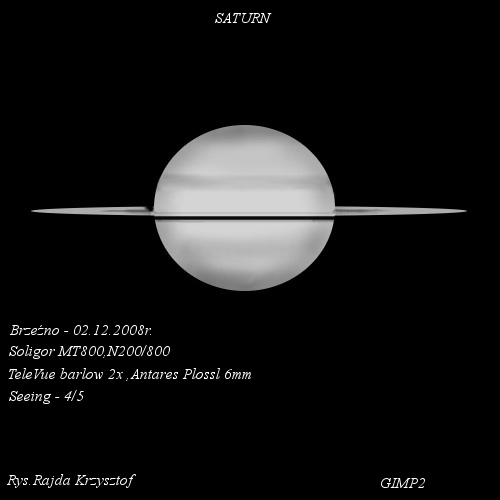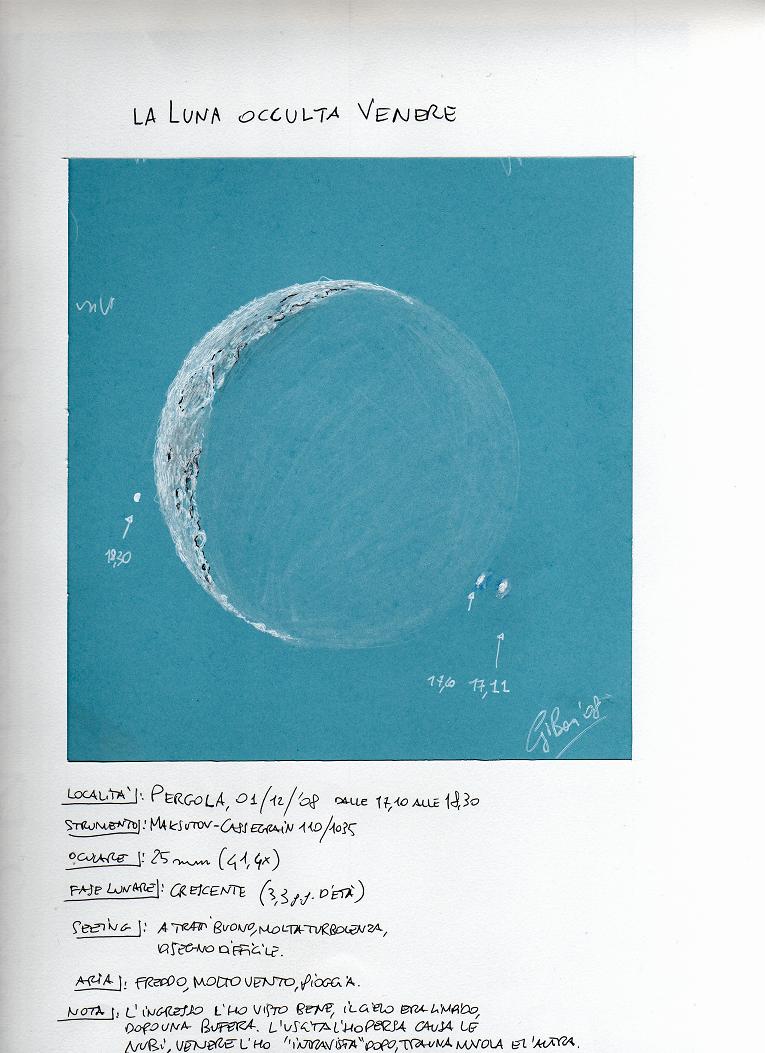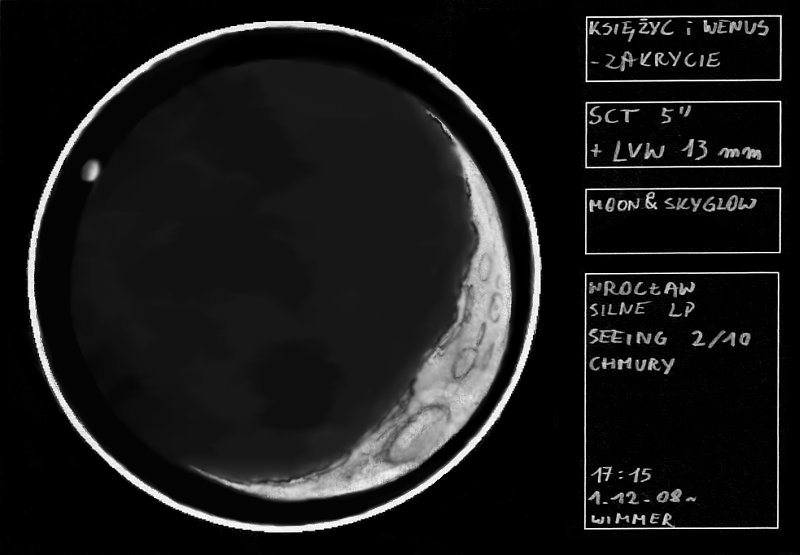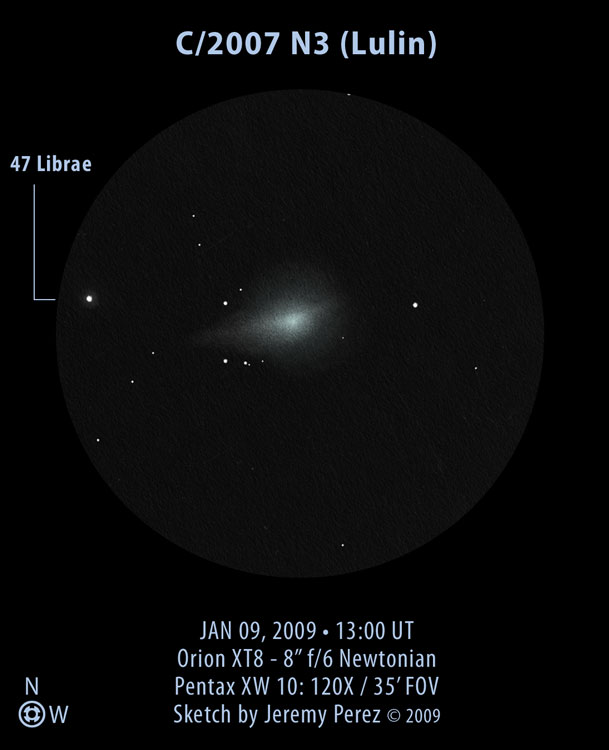
Comet C/2007 N3 over Sunset Crater National Monument
Sketch and Details by Jeremy Perez
Object: C/2007 N3 (Lulin) / Comet
Artist: Jeremy Perez
Location: Sunset Crater National Monument, Arizona, USA
Date: JAN 09, 2009 – 13:00 UT
Media: Strathmore 80# Sketch Paper, 2H & HB graphite for stars,
Charcoal for shading, cleanup and mild color addition in Adobe
Photoshop CS3.
Equipment: SkyQuest XT8 (8″ f/6 Dobsonian) and Pentax XW 10 Eyepiece
(120X / 35′ TFOV)
Report:
It was my hope that I would be able to see this comet’s fascinating
display before the full and waning moon overpowered it for a couple
weeks. I arrived at Sunset Crater National Monument shortly after 5
am with the moon blazing away and lighting up the snow-covered
landscape. The head of Scorpius was rising, and Antares was
flickering with a rusty light just over the tops of the cinder cones.
While the sky was still bright with moonlight, I shot a few photos of
the landscape, and then set up my 8 inch Dobsonian.
The comet was a snap to find and readily pierced the moon-washed star
field as a round glow with a nicely condensed core. I’d estimate the
degree of condensation as 6. Initially, I saw probably about 2 arc
minutes of the core region. The bright 6th magnitude star, 47 Librae
anchored the east side of the field.
As the moonlight began to dwindle and the comet rose higher in the
sky, more structure began to appear. Compared to the neutral gray
background, the comet emitted a very slight aqua tint. A definite
brightening proceeded eastward away from it at a PA of about 100
degrees. This extension (ion tail or dust tail) was visible out to
about 9 arc minutes from the core.
As conditions improved, the coma also appeared to blossom a bit more
to a diameter of about 6 arc minutes. At this point, the brighter
core took on a more elliptical shape that preferred to drag off to
the east. On the west side of the comet, a much fainter extension
emerged from the coma at a PA of about 290 degrees. A quick look at
240X showed the coma to be brighter along its southern half, perhaps
due to the dust tail fanning widely behind and to the south of the
comet. I didn’t spend time trying to compare the comet’s brightness
to nearby stars, but it was definitely brighter than 8th magnitude
M107–I’d estimate by at least 1.5 if not 2 magnitudes. That’s a very
rough estimate, so don’t rely on it for anything. But if correct,
that would put it around 6th magnitude, at the threshold of naked-eye
visibility under a dark, transparent sky. I did not try to spot it
naked eye, however.
The extended details I observed were very subtle and required much
time spent observing with averted vision. Scope tapping, sweeping,
and moving the core outside of the field of view on different sides,
all helped to bring these structures into view. With strong
moonlight, light pollution, or murky skies, they are likely to be
invisible while the comet is so low. The central core however is
quite bright and should be visible to some degree under poorer
conditions.
The time between moonset and the beginning of morning twilight was
fleeting, and the gradually improving view halted, and began to
quickly deteriorate. I spent probably 15 minutes plotting the star
field, then a half hour examining the comet for structure, and a
final 15 minutes trying to eke out the last, faintest bits of detail.
It was an hour very well spent. I attempted to track down the pairing
of comet C/2008 X4 (Christensen) and M107 but was only successful in
spotting M107. I wasn’t able to spend much time on that side trip,
since I needed every bit of attention for Lulin, and I’m glad I made
that choice. Hopefully, Lulin will be quite a bit brighter in two
weeks when the new moon cycle returns and this comet’s beautiful
features will be easier to detect, and rich with developing structure.
